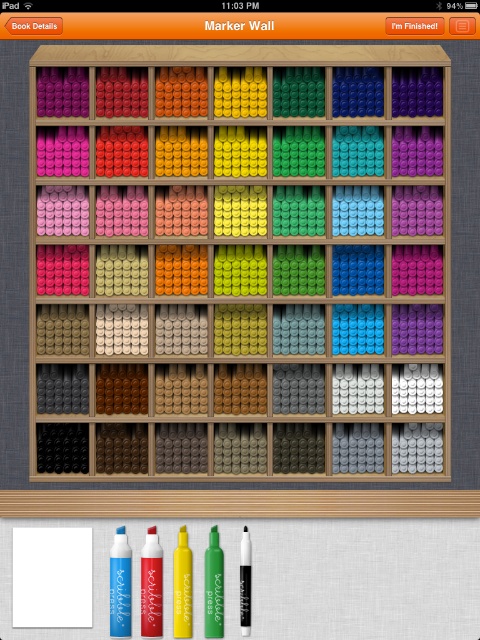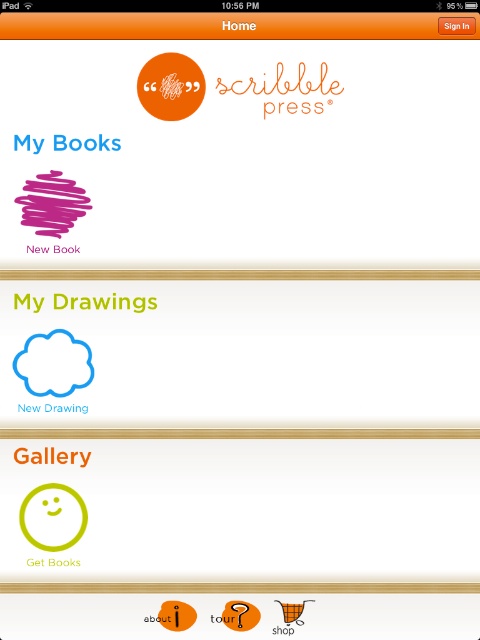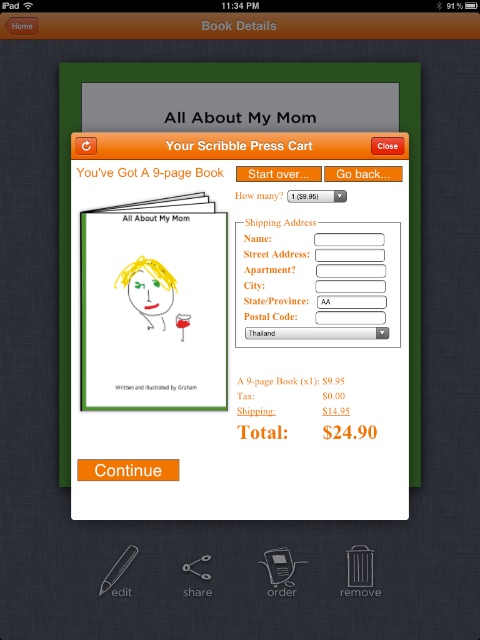Teaching with the iPad in a Real Classroom Environment: Scribble Press

AMITIAE - Friday 10 February 2012
|
Teaching with the iPad in a Real Classroom Environment: Scribble Press |
 |
|
|
By Graham K. Rogers
Scribble away kids, scribble away; maybe your teachers will catch up one day
BackgroundThere are three things needed for success with such a project: proper hardware; effective software; and flexible teachers. I did know one teacher from a famous Songkhla school who motivated a range of staff and volunteers at a students' camp at Ranote one weekend and was as dynamic inside the classroom. He succumbed to the frustration that administrators imposed on him.Instead many teachers are on autopilot working directly from a textbook. One of the comments I have often heard in the past is, "Maybe not suitable for Thai students." Not that the teachers have actually asked the students, or that they have considered trying the new idea (new idea = anathema). This is really code for "Not suitable for Thai teachers." We hear similar sounds already coming from those apparently charged with implementing this project. My own preference is for the iPad. I have had a couple and like how they work as well as the excellent integration with my other devices: Macs, iPhone. The iPad was never going to be chosen for this project as its base price is too high for the mandarins. Instead the figure of less than $100 indicates the extent to which success is not necessary here: just giving it a go and if it fails, "Well we tried." But not very hard. Before the devices have been assembled, boxed or arrived, the software, which may be the key to the project, is already being given the wringing hands treatment: nothing suitable for Thai students, teachers won't know how to use the applications. Asking for specific apps that will be tailor-made for Thai students is the wrong direction. A good teacher should be able to walk into a classroom with two or three paragraphs of text and teach for couple of hours, but I have not seen many here who can do that. The man from Songkhla was one.
Although it is only for the iPad, it is just the sort of thing that ought to be available for students, for example in any programs that use tablet computers in an educational environment.
Scribble PressThe app is a simple tool that enables learners to create their own ebooks using half completed -- fill in the blanks -- text and a space for drawing. The app includes a fabulous array of virtual marker pens. Oddly the array of markers shown in the iTunes App Store screenshots was what made me really want to look at this. While the app has a simple to use interface, clearly a lot of thought and work has gone into it.


I first thought my _____ might be a ninja when I walked in on him/her wearing _____ and doing ninja kicks. This is a picture of what I saw.
ToolsWhen the text section is complete, the book outline is created with the text at the bottom of a page. The few brief paragraphs for the ninja description created a five-page book. At the bottom of the panel on which this is displayed are a good selection of drawing tools. As well as the markers, there is an eraser, a Text icon, to add more information to the end of the already-created text, a selection of stickers, background color selectors and a camera icon. Using this, it is possible either to take a photograph immediately and insert it into the text (and to draw on it), or to import an image from the Photo Album. Other controls here allow Undo and Redo, Forward and Back, as well as page view and cover view.At the top of the page are three tools: Back, Editing of page order, and "I'm Finished". The back icon displays the cover which still needs a little editing of text and the addition of an image. When the student presses, I'm Finished, a panel gives information on the possible options for viewing and sharing and the front cover is displayed. Four icons are shown: Edit, enabling more changes or additions to be made; Share, Order and Remove (Trash). Sharing and ordering will need some supervision.
SharePressing Share brings up a policy statement for each book and needs confirmation that the user is over 13 (or the parent/guardian) using a check-box. A second check is confirmation that there is no personally identifiable information used: a sensible precaution. When the agreement is made a second (blue) panel shows the options: Gallery, Facebook, Twitter, email of a link and Open in iBooks. Without sending the book out, it is possible for the child to see the finished product right away using this last option. The process takes a few minutes while the content is converted to the eBook format. When done, I had four options: iBooks, Stanza (Amazon) as well as two apps that appear to handle the format (they didn't).The Gallery is an online Scribble Press Gallery and this will share the book with others who access the service. The first time this is used we are prompted to create an account (free) with username and password.
Order Using Order will create a hard copy version of the book, which might be of great value in some classes. When I have done poster projects with my own students they are unusually excited when the 20 x 30 posters are unwrapped, having only ever seen these as images on a small monitor: in the medium indeed there is a message.
Using Order will create a hard copy version of the book, which might be of great value in some classes. When I have done poster projects with my own students they are unusually excited when the 20 x 30 posters are unwrapped, having only ever seen these as images on a small monitor: in the medium indeed there is a message.
The process is similar to many online purchasing transactions and as well as my name and address, needed credit card information. The faux book I created (on my mother -- see below) itself was priced at $9.95, but the mailing charges were an additional $14.95, giving a total of $24.90. The option may not be useful to many here from the simple point of cost, although a single copy printed as a surprise (say a birthday or Christmas present) may be of more value than the cash cost.
There is always another way. . .I am rather keen on the idea of the eBook (or iBook) as online delivery of teaching materials has to be considered more these days. I already put many of my handouts and other texts online, saving much paper each year.As there was not an option to export as a file, I saved a series of screenshots and trimmed them, taking off the iPad screen portions and leaving the main part of each picture. I first tried Apple's new iBooks Author, using the basic template. This has an advantage in that I can view the work as it progresses on the iPad as a preview. The finished product was only viewable in landscape mode, and displayed two pages at a time. As a 5-minute exercise, the result was fair. I also tried the same JPG images in Pages, which has an eBook export feature. My main problem here was alignment and resizing of the images as I dragged them in (much easier with iBooks Author). A bigger problem came with the Export to the eBook format as I had forgotten to make the images Inline (they had been "Floating". Fixing that with the Pages Inspector took a couple of minutes and I exported again, dropping the finished file onto the iTunes icon for a sync to the iPad.
CommentThe app is intended for children and is perhaps best used under the supervision of parents or in a classroom teaching situation. A trend these days is for us to make more complete use of the media we can create using mobile phones, computers and tablet computers. This is a fine example that allows children to create, publish and share their own ideas.The two ladies with whom the idea originated have evolved the concept from a bricks and mortar environment to the iPad form, while keeping some of the original motivations that made their studio so popular:
Scribble Press was created by two moms, Anna Barber and Darcy Pollack, as a place for kids and families to write, illustrate and publish their own books. The store is a fully equipped art studio complete with printing and bookbinding on site.
As for teaching, this is so easy that the teachers will have to do very little: their students will show them how.
Graham K. Rogers teaches at the Faculty of Engineering, Mahidol University in Thailand. He wrote in the Bangkok Post, Database supplement on IT subjects. For the last seven years of Database he wrote a column on Apple and Macs. |
|

For further information, e-mail to

|

|